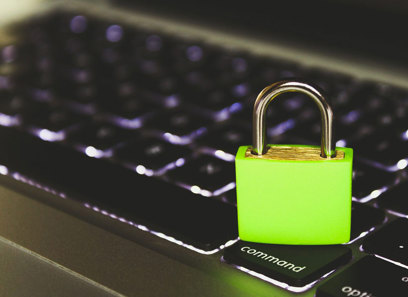Understand Deepfake Social Engineering Attacks and their potential risks.
Understand Deepfake Social Engineering Attacks and their potential risks.
Blog Article
Future-Proof Your Organization: Trick Cybersecurity Forecasts You Need to Know
As services challenge the increasing speed of digital makeover, recognizing the evolving landscape of cybersecurity is important for long-term durability. Predictions suggest a significant uptick in AI-driven cyber risks, alongside heightened regulatory scrutiny and the important change towards Absolutely no Trust fund Design.
Rise of AI-Driven Cyber Hazards

One of the most worrying advancements is making use of AI in developing deepfakes and phishing schemes that are extremely persuading. Cybercriminals can produce audio and video web content, impersonating execs or relied on individuals, to manipulate sufferers into disclosing sensitive information or authorizing deceptive transactions. In addition, AI-driven malware can adjust in real-time to avert discovery by standard safety measures.
Organizations have to identify the immediate demand to strengthen their cybersecurity frameworks to battle these evolving threats. This consists of investing in innovative risk detection systems, promoting a culture of cybersecurity awareness, and applying robust case feedback strategies. As the landscape of cyber hazards changes, proactive procedures become vital for safeguarding sensitive data and keeping organization honesty in an increasingly digital globe.
Increased Emphasis on Data Privacy
Exactly how can companies effectively browse the growing focus on information privacy in today's electronic landscape? As governing frameworks develop and customer expectations increase, businesses have to prioritize robust data privacy techniques.
Buying employee training is critical, as team awareness directly impacts information security. Organizations needs to foster a culture of privacy, motivating staff members to understand the importance of guarding sensitive info. Additionally, leveraging modern technology to boost data protection is important. Carrying out innovative file encryption techniques and protected information storage space options can significantly reduce risks connected with unauthorized gain access to.
Partnership with legal and IT teams is crucial to straighten information privacy campaigns with company purposes. Organizations needs to also involve with stakeholders, consisting of customers, to communicate their dedication to data personal privacy transparently. By proactively attending to data personal privacy issues, businesses can develop depend on and improve their track record, ultimately adding to lasting success in a significantly scrutinized electronic atmosphere.
The Shift to Zero Trust Design
In response to the evolving threat landscape, companies are increasingly embracing No Trust Design (ZTA) as a basic cybersecurity approach. This technique is predicated on the concept of "never ever depend on, always validate," which mandates continual confirmation of customer identities, tools, and data, no matter their area within or outside the network boundary.
Transitioning to ZTA includes executing identification and accessibility monitoring (IAM) remedies, micro-segmentation, and least-privilege accessibility controls. By granularly regulating access to sources, organizations can minimize the risk of expert threats and minimize the influence of external breaches. Furthermore, ZTA incorporates durable monitoring and analytics capacities, enabling organizations to identify and react to abnormalities in real-time.

The shift to ZTA is also sustained by the increasing adoption of cloud services and remote work, which have increased the assault surface (cyber resilience). Conventional perimeter-based safety and i was reading this security models want in this new landscape, making ZTA a more resistant and adaptive structure
As cyber hazards proceed to expand in elegance, the adoption of Zero Depend on concepts will certainly be vital for companies seeking to secure their assets and keep regulatory compliance while making certain service continuity in an unsure setting.
Regulatory Adjustments imminent

Future policies are anticipated to attend to a range of problems, including information personal privacy, violation alert, and event reaction methods. The General Data Security Policy (GDPR) in Europe has established a precedent, and similar frameworks are arising in various other regions, such as the USA with the recommended government navigate to this website personal privacy legislations. These regulations commonly impose rigorous charges for non-compliance, emphasizing the need for companies to prioritize their cybersecurity measures.
Moreover, sectors such as money, medical care, and critical framework are most likely to face much more strict requirements, showing the sensitive nature of the data they manage. Conformity will not merely be a legal responsibility but a crucial part of structure trust fund with clients and stakeholders. Organizations has to stay in advance of these changes, incorporating regulative demands right into their cybersecurity strategies to make sure resilience and protect their assets efficiently.
Importance of Cybersecurity Training
Why is cybersecurity training a crucial component of an organization's protection approach? In an age where cyber threats are progressively advanced, companies have to recognize that their employees are usually the first line of defense. Effective cybersecurity training equips team with the understanding to identify potential hazards, such as phishing strikes, malware, and social design techniques.
By browse around here promoting a society of safety awareness, organizations can substantially decrease the threat of human mistake, which is a leading source of data breaches. Regular training sessions make sure that employees remain notified regarding the newest risks and ideal techniques, therefore boosting their capacity to react suitably to incidents.
Furthermore, cybersecurity training promotes conformity with governing requirements, reducing the threat of legal consequences and economic charges. It also equips staff members to take ownership of their duty in the company's security framework, bring about an aggressive instead than reactive approach to cybersecurity.
Verdict
In final thought, the progressing landscape of cybersecurity needs aggressive procedures to attend to arising risks. The rise of AI-driven strikes, coupled with heightened data privacy problems and the transition to Absolutely no Trust Style, necessitates an extensive technique to protection.
Report this page